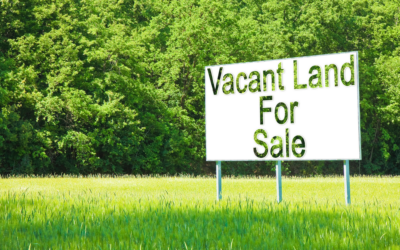Real Estate Investing is one of the most sought after ways for wealth creation. If you look at the list of top 100 wealthiest people in the world, you’ll surely see many wealthy real estate investors on the list. The stats look good and can convince anyone to begin their real estate investing and justify investing in commercial property.
However, before you dive straight into the business of real estate investing, it pays to brush up on your basics, such as how to invest in commercial real estate and understand a few critical aspects of real estate investing. This blog is an overview of one such vital factors that play a significant role in determining your real estate investing success – the ROI commercial real estate or Commercial Real Estate Return on Investment.
Understanding what does ROI means in real estate and what’s a good ROI for a commercial real estate property is detrimental to making a good investment and purchasing decisions.
What is the ROI?
In commercial property investment, ROI is a metric that is used to measure how much profit or money is made on commercial property investment, as a percentage of its cost. In accounting terms, ROI commercial real estate indicates the percentage of invested capital, which is recouped after deducting all the associated expenses like repairs and renovations, rehabilitation costs, purchasing costs, and so on. ROI can quickly tell an investor an average estimate on the profitability factor of investing in a particular commercial real estate property.
While purchasing a commercial property, commercial property owners often look at the ROIs of different properties before they conclude their purchasing decisions. Further on, the next question will be – what is a good ROI for commercial real estate investors? Read on.
What is a good ROI for commercial real estate investors?
There is no single number that is considered a “good” ROI for commercial real estate investing. If there were, investing in commercial property and making a fortune out of it would have been a piece of a cakewalk for everyone. Determining what is a “good” ROI for any commercial real estate property depends on a lot of variables that carry their own set of complications. What may be considered as a good ROI on one property may not be a good number for another. Similarly, what is regarded as a “good” ROI by one commercial real estate property investor may not be a good ROI for another?
Additionally, a good ROI on commercial real estate investments varies by the risk tolerance of the investor. As a rule of thumb – the more risk you’re willing to take, the higher ROI you shall be expecting. On the contrary, an investor who is averse to risks will be very happy in investing in a commercial real estate property with low risks and can settle down for relatively lower ROIs.
However, if you remove this blanket of risk tolerance ratios and look at it from a broader perspective on making a commercial real estate investment worthwhile, one should look at investments that match or exceed the S&P 500. The historical average estimate of the S&P 500 is 10%. Thus, a considerably “good” ROI on investments can be considered as 10% and above return cases. However, to gain a more in-depth insight into what makes up for a “good” ROI, understanding the factors that affect the property’s ROI will be beneficial.
Looking into the factors that determine ROI helps one gauge what’s a good ROI and what’s not. Here’s the most simple way of calculating ROI on commercial property investments:
Return on Investment = (Gain – Cost) ÷ Cost,
where Gain means Investment Gain and Cost means Investment Cost.
This equation is the most fundamental way of calculating ROI and can be applied under a wide variety of use cases. However, it is essential to note that various formulae can be applied to determine the ROI of real estate investment, and different methods provide different numbers. For a basic understanding, this simple equation gives us enough to start our analysis. Here’s a brief overview of the complications in calculating the ROI on a commercial real estate property investment:
Difficulties in calculating ROI for commercial real estate investments
There are numerous methods of calculating ROI on investments. Since different ways provide different answers, it can get confusing to understand what figures to rely most on and which ones to ignore. A good understanding of mixed-use case scenarios of calculating ROI is thus essential to arrive at a value that makes the most sense. (Two of the most widely used methods of calculating ROI are discussed in the next part of this blog)
When the property is refinanced or a second loan is taken out on commercial real estate property, the loan charges associated with a property will increase, which will decrease the initial ROI calculated on the property, giving way to misleading figures.
There’s always a chance for an increase in the maintenance costs, utility rates, and the property taxes associated with the commercial real estate property; these figures need to update from time to time into the ROI calculation, leading to variable ROI on the property.
When the loan taken on a commercial real estate property is switched to an ARM loan, which is an Adjustable Mortgage loan whose rates keep fluctuating according to the trends in the market, it will directly impact the ROI calculated and, again, lead to variable ROI on the property.
#1 – The Cost The two most widely used methods of calculating ROI on a commercial real estate property
Method
The Cost Method determines the ROI by dividing the property owner’s equity in the property by that property’s costs. Let us use an example to understand this better:
Example 1: Let’s assume a property was purchased at $2,00,000. The investor spends an additional $1,00,000 on the repairs and rehab expenses, which increases the property’s value to $4,00,000, making the investor’s equity in the property to $1,00,000. (4,00,000 – (2,00,000+1,00,000)). According to the cost method, the ROI of the property is arrived by dividing the investor’s equity in the property by all the associated costs with purchasing, including repairs and rehabs cost.
Thus, ROI here according to the cost method = 1,00,000 ÷ 3,00,000, which is 0.33 or 33% ROI.
#2 – The Out of Pocket Method
As the name suggests, the out of pocket method considers the actual out-of-pocket expenses incurred in the purchase and acquisition of the property. This method is generally preferred mostly by real estate investors, as this method reflects high ROIs. From the same example above, let’s assume that the investor bought the property by taking a loan instead of a cash purchase, with a down payment of $40,000.
The out-of-pocket expense, thus, reduces to $40,000, plus an additional $1,00,000 for the repairs and rehab expenses, which is $1,40,000. With the valuation of the property at $4,00,000, the investor’s equity in the property now rises to $2,60,000. The ROI now would be 2,60,000 ÷ 4,00,000, which is 0.65 or 65%, which is double the ROI we’d arrived at using costs method. This increase in ROI is attributed to the loan leverage and does not mean that an investor actually makes any real increase in the profits.
ROIs must not be equalized with-profits
It is easy to misunderstand the term ROI with profits, which can be very misleading. Remember that ROIs are small percentages of Gain one can “expect” from a commercial real estate investing venture, but it does not equal to real profits. Before the estimated ROI can be realized in actual cash profits, an investor needs to sell the commercial property. Many a time, the property will not sell at its said market value. There can be instances when the sale is closed after reducing the property’s price, which will decrease the actual cash ROI of the property.
Besides, other additional costs are associated with selling a commercial real estate property which includes the extended repairs and maintenance costs, landscaping, selling and Advertising expenses, legal charges of selling a property, commission or brokerage paid to commercial real estate brokers and so on.
To determine the overall end profit of a commercial real estate investment, these costs must be included. Thus, it is dangerous to assume that the ROIs calculated will be equal to the profits. A “good” commercial real estate return on investment; therefore, is the returns one can considerably find profitable even after considering and deducting all the sale-related expenses of the property.
Final Words
Calculating commercial real estate return on investment can be super simple or complicated depending on the variables considered and the overall risk-taking abilities of investors. It is essential to take all the contributing factors into account before determining what a good ROI on investments is and what’s not. Hiring an expert to conduct all the due research might be beneficial in making informed commercial real estate purchasing decisions.





